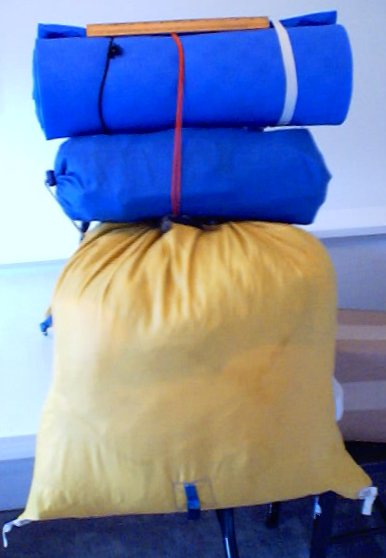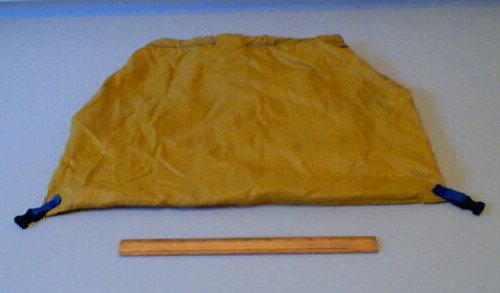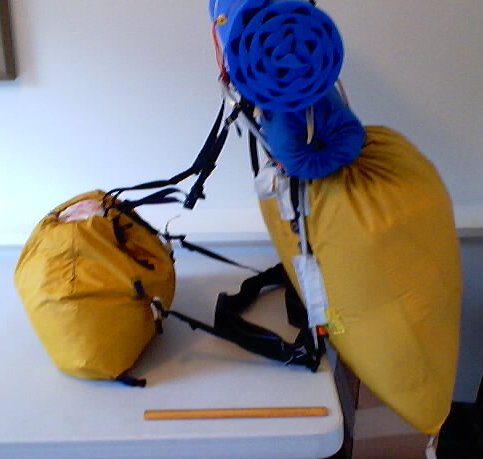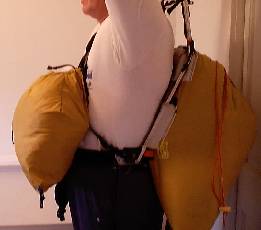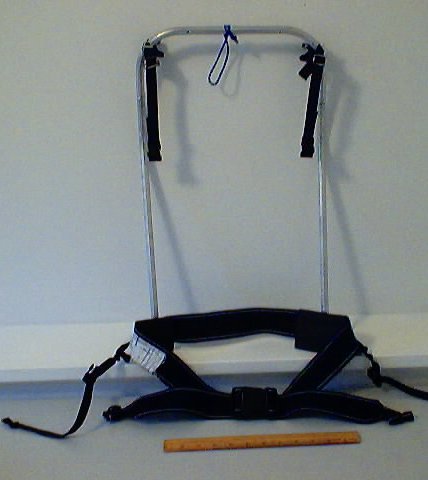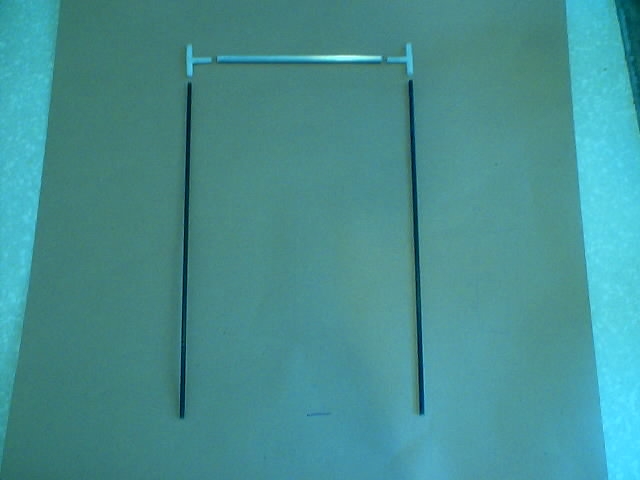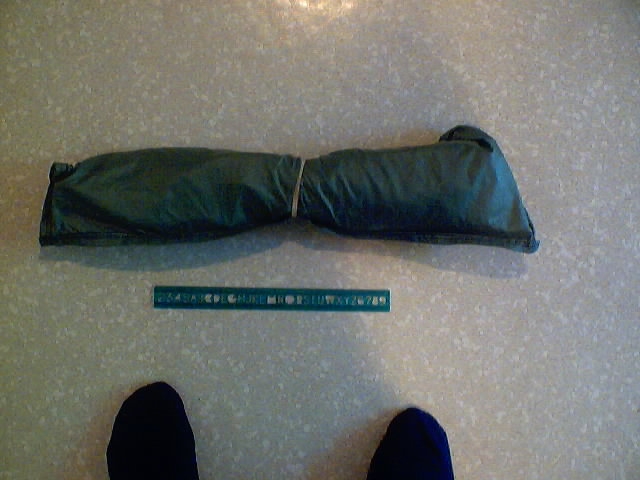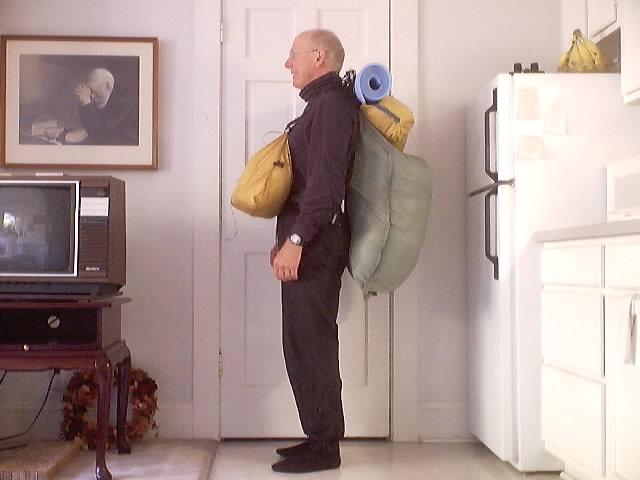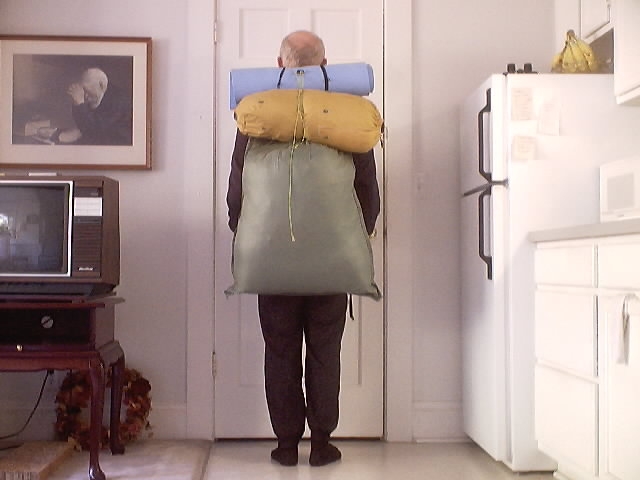|
ONE POUND FRAME PACK The attached photos show a one-pound, homemade frame backpack, versions of which I have tested and used over the last few years. I have used this for week long trips carrying up to 45 pounds. It is the lightest and most comfortable pack I have used in my 40 years of backpacking. WEIGHTS / VOLUME
All of these items can be modified for fit, volume, durability and comfort. I have made versions ranging from 1 to 1.5 pounds total weight. The model shown in the pictures has a bag volume of roughly 4000 cubic inches and strap on capability for sleeping bag, tent, foam pad and ice ax. PHOTO COMMENTS
ADDITIONAL DETAILS (1) Front and back bag fabric is uncoated, 1.9 ounce ripstop nylon. (2) Waist belt is 2" wide nylon with a quick release buckle in front. (3) Pack attaches to belt with 3/8" nylon Ts from a plumbing store. For added comfort I sewed 1/4" pieces of foam to the inside of the belt where these fittings are attached. (4) All web is 1/2" and all buckles are 5/8" quick release types. I have attached about a half dozen extra buckles at various places so I can hang things from the pack (e.g bear spray, monocular, ice ax, wet clothing, cap, handkerchief, etc.). (5) Bags have drawstring closures like stuff sacks. (6) Bags and waist belt can easily be unclipped from frame for washing. Because the cloth is uncoated I can throw it in the washing machine. SIMPLE TEST You can test the concept without a big investment. Take a frame pack and hang a day pack on the front of the frame by suspending it from the upper two corners of the frame. If properly fitted, the webbing from the front bag to the top corners of the frame will be taut and only lightly touch the top of your shoulders adjacent to your neck.
|
Return to: [ Top of This Page ] [ Make Your Own Gear Page ]
